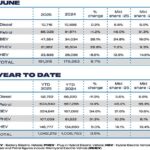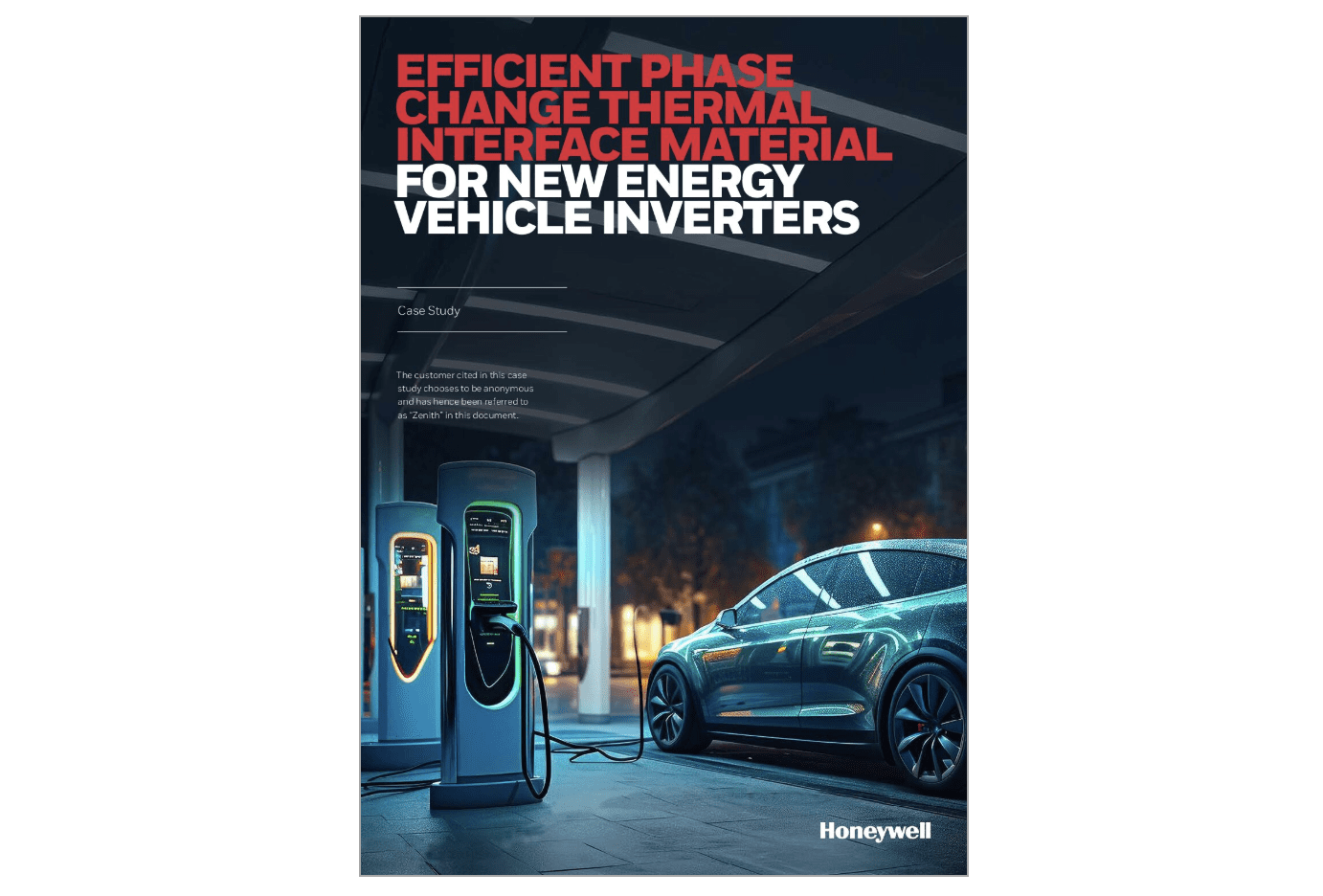07 July 2025

The UK saw registrations grow for the third time this year, with electric vehicles (EVs) driving the improvement as the petrol decline continued. Autovista24 special content editor Phil Curry examines the latest data.
The UK’s new-car market is heating up. For the second consecutive month, registrations in the UK improved, as the country looks to get its market back on track.
Passenger-car deliveries rose by 6.7% in June, according to the latest data from the SMMT. With 191,316 units making their way to customers. This was the third improvement of the year, and was driven entirely by EVs.
The country’s market has been in a state of flux during 2025. Carmakers are under pressure to deliver on their zero-emission vehicle (ZEV) mandate targets, despite some buyer reluctance towards the technology. Combined with a decline in internal-combustion engine (ICE) registrations, these challenges have impacted the sector.
However, thanks to a strong March, when the country introduced new registration plates, year-to-date figures have remained positive. At the end of the first half of 2025, deliveries were up 3.5%, with 1.04 million units.
EVs proved the main driver of registrations growth in June. Aside from diesel, all other powertrains experienced declines. It was the second time this year that the technology, made up of plug-in hybrids (PHEVs) and battery-electric vehicles (BEVs) has been responsible for the market’s improvement.
BEVs charge onwards in June
BEVs were the leading powertrain in terms of registrations growth in June. Volumes increased 39.1% to 47,354 deliveries. This equated to a gain of 13,320 units year on year. The technology took a 24.8% market share in the month, meaning nearly one in four cars registered was a BEV. This was up from its 19% share recorded a year previously.
With no government-backed incentives for BEV purchases in the UK, carmakers are instead offering discounts. According to the SMMT, around £6.5 billion (€7.55 billion) has been spent on discounts since the ZEV mandate was introduced at the start of 2024.
For 2025, the target market share has increased to 28%. Yet in the first six months, BEV registrations accounted for just 21.6% of total deliveries, some way off the requirement. This is despite BEV deliveries increasing by 34.6% compared to the same period last year, with 224,841 units.
‘This level of discounting is unsustainable. The government has acted on the ZEV mandate, tweaking it to remove some of the burden on the industry. But consumer confidence in these new technologies is still not there,’ Mike Hawes, SMMT chief executive, told the press at the recent International Automotive Summit.
‘We would seek still more incentives, for the private consumer, from the government. But what we are getting is disincentives.’
In recent months, BEVs have been required to pay vehicle excise duty (VED) each year. They are also now eligible for the expensive car supplement (ECS). This increases the tax payable if a vehicle is sold for more than £40,000. So, it is likely that the increase in registrations comes at the cost of further discounting.
Strength in PHEVs
PHEVs have also enjoyed an upswing in registrations this year. While volume levels are some way below BEVs, growth has been consistent. June represented the sixth consecutive month of double-digit improvement, as 28.8% more units were delivered. This equated to a total of 21,382 PHEVs which made their way to customers.
The result gave the technology an 11.2% market share. This was up by 1.9 percentage points (pp) compared to June 2024.
With growth throughout the year, it is no surprise that at the end of the first half of 2025, PHEV registrations have improved strongly. With 107,039 units, deliveries increased 31.3%. The powertrain’s market share rose by 2.2pp, to 10.3%.
As PHEVs do not count towards the ZEV mandate, this growth appears to be organic. With more models available, and a potentially shrinking selection for more traditional petrol and diesel vehicles, the market is suddenly more attractive for buyers.
The two strong results for BEVs and PHEVs meant that, combined, EV registrations rose by 35.7% in June to 68,736 units. This equated to an additional 18,098 deliveries year on year. Between January and June, EV volumes improved by 33.5% to 331,880 registrations, with 83,262 more units taking to UK roads.
A fall for hybrids
While EVs gained, full hybrids (HEVs) struggled in June. Unlike other markets, the SMMT does not merge mild-hybrid (MHEV) powertrains together with HEVs, giving a clearer picture of the powertrain’s progress.
For the second time in 2025, HEVs suffered a registrations decline last month. Deliveries fell by 8.5%, with 23,835 units. This left the powertrain with a 12.5% market share, a drop of 2pp year on year.
HEVs have consistently been the UK’s third-best performing powertrain type, behind BEVs and petrol models. However, with the continued strong results for PHEVs, the gap between these two hybrid technologies has been closing in recent months.
June represented the smallest difference between PHEV and HEV market shares so far this year, at just 1.3pp. In comparison, HEVs January share was 4.2pp ahead of PHEV market hold during the same month.
In the year to date, HEVs are up by 9%, with 146,777 registrations. This has given the powertrain a 14.1% market share, up by 0.7pp compared to the first half of 2024.
Adding HEVs into the UK’s EV mix, electrified vehicles were again the dominant powertrain technology last month. With a 20.7% rise in registrations, they accounted for 48.4% of the overall registrations total, a rise of 5.6pp.
In the first six months of 2025, the technology has seen growth of 24.9%. The powertrain grouping also recorded a 7.8pp market share increase to 45.9%.
Rare growth for diesel
Diesel registrations, including MHEVs, increased for the first time since December 2023. However, their monthly improvement was negligible, with a 10,716-unit total translating to a 0.2% rise. This meant just 20 more models were delivered to customers in the month.
Despite the marginal increase, the fuel type’s market share dropped by 0.4pp, to 5.6%.
In the first six months of the year, diesel registrations have declined by 11.3%, as 58,722 units took to UK roads. This means its share of the overall registration total in this period is also 5.6%, down by 1pp compared to the same period in 2024.
Petrol registrations, combined with MHEV powertrains, continued their run of declines, with a 4.2% drop in the month. The fuel type remained the UK’s most dominant powertrain. Paradoxically, June represented its lowest market share of the year, at just 46%. This was down by 5.3pp compared to the same point last year.
Between January and June, petrol registrations have fallen by 9.4%, with 504,840 units delivered. Yet, they still make up the majority of the UK’s new-car market, with a 48.4% share. However, this was down from the 55.4% market hold recorded in the first half of last year.
Combined, ICE deliveries were down by 3.7% in June. This gave the powertrain grouping a 51.6% market share, a drop of 5.6pp year on year.
Across the first six months of 2025, ICE registrations declined by 9.6%, with a 54.1% share down from 61.9% in the same period of 2024. However, this was still 22.3pp ahead of the EV market and led the electrified market by 8.2pp.







